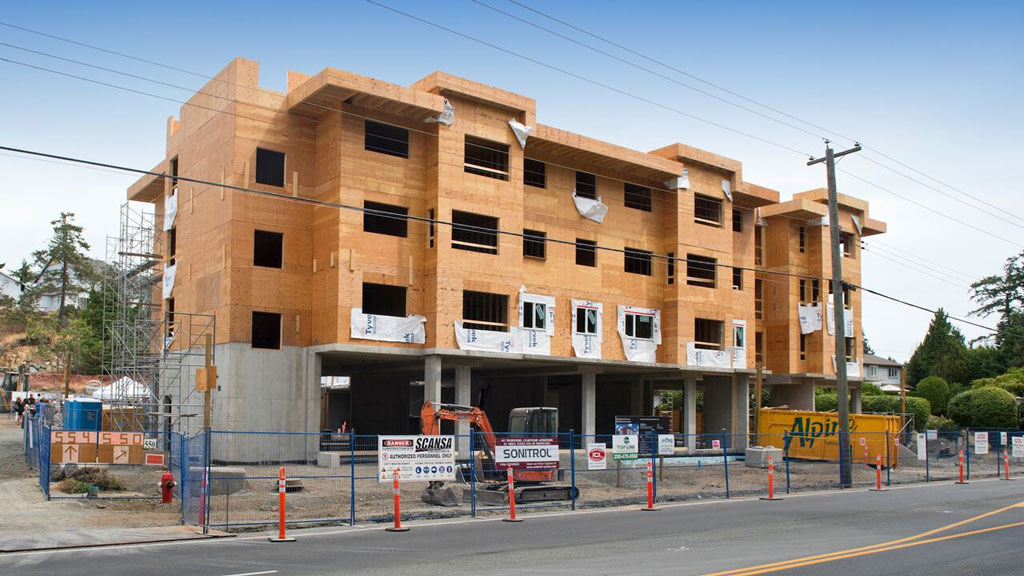A Vancouver Island city is looking to use its explosive growth as an opportunity to reduce carbon emissions.
In November, Langford became the first jurisdiction in Canada to adopt a low carbon concrete policy. Effective June 1, 2022, all concrete supplied to city-owned or solicited projects, and private construction projects greater than 50 cubic metres, will be required to be produced using post-industrial carbon dioxide mineralization technologies, or an equivalent which offers concrete with lower embodied CO2.
Langford Mayor Stew Young said as one of the fastest growing cities in Canada, the city has an opportunity to create buildings that reduce harmful emissions.
“We are growing taller with towers now,” said Young. “Our population has gotten to the size where we are building up in our downtown to 20 and 25 storeys. We are going to be using a lot of concrete so the timing for Langford is very good. We don’t really have any buildings over 12 storeys now and we are looking at ways to make greener building regulations. This one was natural. It made sense.”
According to the city, embodied carbon emissions – resulting from construction activities and manufacturing of building materials – encompass all of the greenhouse gas emissions that are released before a new building is being used.
Cement production, the key ingredient in concrete, is responsible for about seven per cent of the world’s CO2 emissions. Concrete is the most used building material in the world, making it one of the largest contributors to embodied carbon in the built environment.
Young explained as the city looks to address the affordable housing crisis, it wants to build in a way that is fast, ethical and cost-effective.
“We are really trying hard to get supply built and make sure people have an opportunity to buy a home. Now we are going higher with condos,” said Young. “This gives us another pipeline for that $300,000 to $500,000 price range. We needed to find a way as we develop and grow to look at the impacts to the environment.”
According to Young, the city’s process for rezoning is roughly three months and he intends to keep the process as quick and affordable for builders as possible.
“We waste a lot of money in the housing crisis just by creating all this bureaucracy,” said Young. “We don’t want to see that. We want to look for ways to solve the climate crisis and housing crisis by partnering with different ideas.”
Young explained carbon mineralization technologies inject captured CO2 into concrete during the mixing process where it becomes permanently embedded. This increases compressive strength, which then enables the reduction of carbon-intensive cement content in mix designs.
“This is a good policy for any municipality,” said Young. “We are getting calls from all over B.C. asking how we did it. I can tell you, it’s really simple. We just did it. You give everyone months to comply, you set a level playing field and it’s not a bunch of bureaucracy.”
Young added the city intends to have a ticker on its website that tracks how much carbon the construction industry is keeping out of the atmosphere by using green concrete technology.
Part of the city’s research included speaking with experts at CarbonCure, a Canadian company the specializes in injecting recycled CO2 into new concrete.
“Government has the power to lead by example and catalyze the transition to wide-scale use of low-carbon concrete,” said Robert Niven, CEO of CarbonCure, in a press release. “Cities can act faster because they are at the frontline of governance and can be more responsive to local governments and citizens. They can be dynamic and take action, like the City of Langford. While provincial, state and national governments talk about what they are going to do, local governments get it done.”



Recent Comments
comments for this post are closed